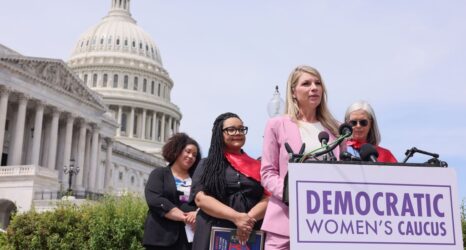Last year, 24-year-old Breanna Stewart led the Seattle Storm to their third franchise WNBA Championship, becoming the sixth player in WNBA history to win MVP and a Championship in the same year. This year, during the EuroLeague Championship and one month before WNBA season, she ruptured her achilles tendon—and called national attention to the rigorous, year-round schedule maintained by many professional women’s basketball players.
Stewart was in Russia for the EuroLeague when she injured herself, a distance that pales in comparison to the travel she’s logged since graduating from University of Connecticut. In 2016, she won her fourth consecutive NCAA National title, was drafted to the Seattle Storm as the #1 overall pick and named WNBA’s Rookie of the Year and played in the Summer Olympics. In 2017, she competed overseas in China in addition to playing in the WNBA season and All-Star Game. In 2018, she went back to China, played in the WNBA Season and All-Star game again and became the WNBA Champion.
The average NBA salary is $6.4 million, which allows many male players the luxury of staying in the country during their off-seasons to train and recover. WNBA players, however, earn an average of only $75,000 a year. They often participate in overseas leagues, which can pay up to ten times that amount, in order to supplement their income. But year round play and low salaries among WNBA players is hard, physically and mentally.
“Everything we do is a sacrifice,” explains Tamika Catchings, former Indiana Fever powerhouse. “We have a long way to go. We are sitting here trying to compare ourselves to the NBA, and there’s really no way to compare it—because we are in two different markets and two different time frames.”
Some have argued that the pay gap between men and women professional players has nothing to do with gender, but rather the economics of each franchise. But when you talk about the differences between men’s and women’s professional basketball, sex matters.
The WNBA is a young league. It was founded in 1996, almost exactly 50 years after the NBA. As the league starts its 23rd season next month, the popularity, the media coverage, reputation, development, players and overall net worth of the W franchise remains largely overshadowed by the NBA.
It is estimated that the WNBA is paying players approximately 20 to 25 percent of the league revenue; NBA players are paid approximately 50 percent. The NBA’s net worth is about $350 billion; the average NBA team is worth $1.9 billion. But the WNBA’s net worth altogether is less than a billion dollars.
These differences alone are proof of the broader problem facing female athletes experience, regardless of the sport they play. Placing the blame of low salaries in the WNBA on a franchise that is largely undervalued and overlooked by most of the country will not increase player payment substantially.
Seattle Storm star Sue Bird puts it best: “Look, we’re not over here saying we should be paid the same as the men. We’re realistic. We understand that this is a business and that their revenue is insane compared to ours. But there is a bias that exists.”
The WNBA, which is currently operating without a president, is facing outcry from its players, and is in the process of renegotiating the league’s collective bargaining agreement. This agreement will hopefully raise the salary cap, provide players with more professional amenities and grant them a seat at the table to shape their futures.
The time WNBA players spend away from their families, and the constant wear and tear they face from their time on the court, makes playing in the NBA look like a walk in the park in comparison. But who’s to say that WNBA players will not continue to play overseas even with the new CBA? With a starting salary of $100,000 in the EuroLeague, there would still be a hefty incentive to play overseas even if players’ salaries increased a substantial amount in the WNBA.
Playing overseas should be a choice, not a necessity. To make that true would require making sure women athletes are being paid what they’re worth.





